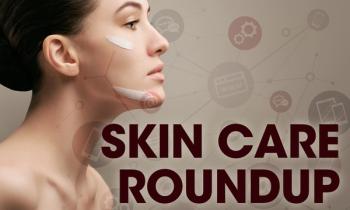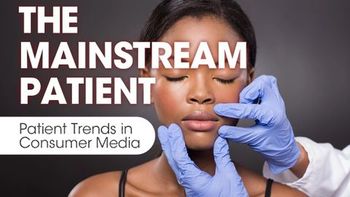
8 simple tips for happy patients
Unhappy patients discourage dermatologists and staff, and they result in negative feedback and business loss. What turns anxious and grumpy into calm and happy? A few of Dermatology Times’ Editorial Advisory Board members share their favorite tricks.
Unhappy patients discourage dermatologists and staff, and they result in negative feedback and business loss. What turns anxious and grumpy into calm and happy? A few of Dermatology Times’ Editorial Advisory Board members share their favorite tricks.
Happy tip 1: Soothe the soul
Seth Matarasso, M.D.“In my treatment rooms, I have music playing,” says Seth Matarasso, M.D., clinical professor of dermatology at University of California School of Medicine, San Francisco. “It’s not overpowering. It’s just sort of background or white noise. I find that [for] patients who are anxious about having a procedure done, it calms them down and gives them something to focus on. If you’re running late, music gives them something to occupy their mind, so they’re not so preoccupied with your tardiness.”
Happy tip 2: The tap
Tina S. Alster, M.D.“Because patients generally have protective goggles that prevent them from seeing where I am treating with the laser, I prepare them for the first laser pulse by tapping the area to be treated with my finger, so that the patient knows exactly where the first laser ‘zap’ will be placed,” says Tina S. Alster, M.D., director, Washington Institute of Dermatologic Laser Surgery, and clinical professor of dermatology, Georgetown University Hospital, Washington, DC.
“In addition, I prepare them for a bright light [even though their eyes are covered]. Without preparation, patients often jump with the initial pulse [not because of pain, but because they are surprised by the snap of the laser and the bright light],” she says. “During a procedure, I often tap the patient’s shoulder with my non-operating hand in order to distract the patient from the procedure. Patients often tell me how much more comfortable the procedure is with this simple distraction technique!”
Happy tip 3: Value their time
Patricia Farris, M.D.Patients appreciate knowing that the doctor values their time, says Patricia Farris, M.D., clinical associate professor of dermatology at Tulane University and in practice at Old Metairie Dermatology, Metairie. La.
She doesn’t keep patients waiting long, in general, but she always enters the room, greets the patient and then says, "I hope I didn't keep you waiting too long.”
Happy tip 4: Gain toddler trust, restore security
Albert C. Yan, M.D.Kids like to say no, especially when they're already concerned about what the dermatologist is going to do to them, says Albert C. Yan, M.D., chief, section of pediatric dermatology, Children's Hospital of Philadelphia, and professor of pediatrics and dermatology, Perelman School of Medicine at the University of Pennsylvania, Philadelphia, Pa. “So if there is a mole on the arm, I don't give kids open choices, like: ‘Can I look at your arm?’,” he says. “What if the child says no? If you do it anyway, the child loses trust because you're not listening to what the child said. Instead, I give them directed choices, like: ‘Which arm can I look at first?’”
Toddler tip: Toddlers are leery of seeing the doctor, especially after all the immunizations they have gotten during the first year, according to Dr. Yan. “With younger kids, it's best to have the child placed in mom's or dad's lap for the exam, so they don't feel separated and insecure,” says Dr. Yan.
Happy tip 5: Demonstrate
Elaine C. Siegfried, M.D.It helps dermatologists and their pediatric patients if the doctor does a demonstration before doing a minor procedure, such as cryotherapy or skin scraping, says Elaine C. Siegfried, M.D., professor of pediatrics and dermatology, Saint Louis University School of Medicine, St. Louis, Mo.
Happy tip 6: Sit down!
Ranella Hirsch, M.D.“Patients interpret a standing physician as a rushing physician,” according to Ranella Hirsch, M.D., a dermatologist in Cambridge, Mass. “Sitting down while engaging with a patient has been shown both to relax the patient and create a more trusted patient-doctor relationship. It forces focus on both sides, leading to a more productive [but not longer] interaction,” Dr. Hirsch says.
Happy tip 7: Put yourself in their shoes
Joel Schlessinger, M.D.“Imagine you are the patient and then work from there,” says Joel Schlessinger, M.D., president of LovelySkin.com. “For example, if you see a patient who is in an exam chair and has their feet hanging down at an odd angle, imagine how that might feel for you and offer to adjust the chair. The same thing goes for the temperature of the room. Instead of coming into a patient room and judging the temperature based on your comfort level, imagine how it might feel to a patient in a gown without any underclothes on to warm them.”
Happy tip 8: Chat takes off the edge
Ronald Wheeland, M.D.“After explaining the procedure and what the process is, I've found that, rather than have the patient listen to the sounds of the instruments or the cautery, I just try to find something they want to talk about. My most frequent successful question to get a nervous patient to start talking is: ‘What do you like to do for fun?’” says Ronald Wheeland, M.D., a dermatologist in Tucson, Ariz., and past president of the American Academy of Dermatology. “I'm always amazed where these conversations end up going. [And] frequently at the end of the procedure they say something like, ‘Boy, that was sure easy and it didn't take long at all!’”
Newsletter
Like what you’re reading? Subscribe to Dermatology Times for weekly updates on therapies, innovations, and real-world practice tips.
















